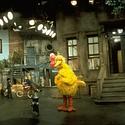Sesame Street: 'J' is for Jane Jacobs
Imaginative map of Sesame Street and environs. From the Muppet Wiki Sandbox.
"Can you tell me how to get/ How to get to Sesame Street?"
There's a reason everyone wants to head to Sesame Street. It's a model of Jane Jacobs urban environment.
As well as her unmatched influence on urban planners over the last six decades, Jane Jacobs had significant influence on the character of the neighbourhood designed for Sesame Street. Sesame Street is a monument to the power of place and inclusivity. In her blog post on the source of Sesame Street's vitality as a neighbourhood, Lydia Kulina explores how the design of the set embodies Jacob’s principles and, further, how it functions as an invitation to a more inclusive urbanist imagination.
Kulina looks at the physical layout and features of Sesame Street as well as the roles and behaviours of the inhabitants of the neighbourhood. Jacobs told us how these factors were all interrelated.
This article is a short read, but it could leave you with a clearer picture of what Jane Jacobs' ideal street might look like, how those characteristics provide a sense of 'place' (which is to say, neighbourhood identity and a pride in belonging), and why that feeling of place both follows from and leads to community engagement in a feedback loop that builds social capital and stability.
How did we get to Sesame Street: 'J' is for Jane Jacobs


